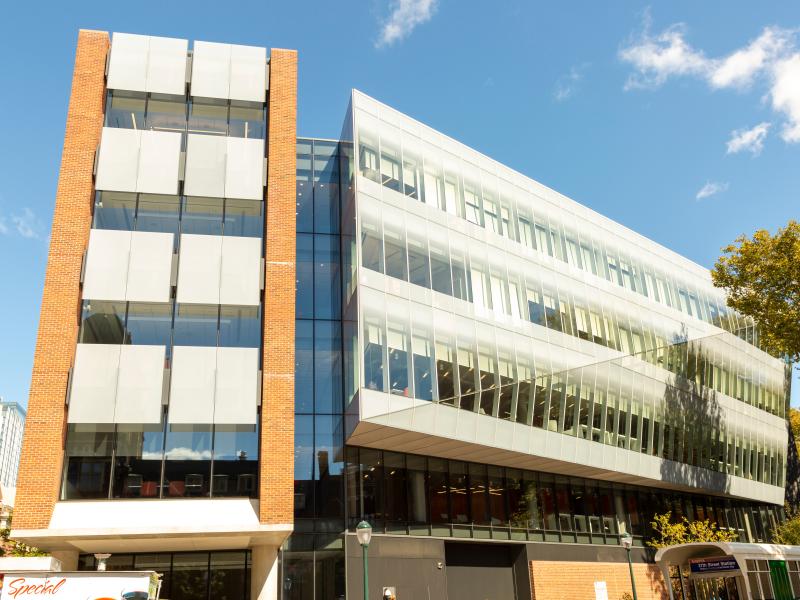Wharton's Academic Research Building, completed in 2020, resolved two important functions, while also defining several significant campus features. Primarily, the ground floor improved aging campus infrastructure, replacing the formerly underground electrical substation and the surface service dock with new facilities. The upper floors link to the south side of Steinberg Hall -Dietrich Hall, adding critical space for Wharton’s academic and research uses.
Academic Research Building
Wharton's Academic Research Building, completed in 2020, resolved two important functions, while also defining several significant campus features. Primarily, the ground floor improved aging campus infrastructure, replacing the formerly underground electrical substation and the surface service dock with new facilities. The upper floors link to the south side of Steinberg Hall -Dietrich Hall, adding critical space for Wharton’s academic and research uses.
The 65,000 GSF building links to the south side of Steinberg Hall-Dietrich Hall. Four academic and research space floors include flat-floor classrooms, group study rooms, research centers, and shared conference rooms. The new entrance completes the east side of Tannenbaum Plaza, and Woodland Walk is extended to renew the intersection at Spruce Street and the connection to the iconic Quad. Two floors are programmed for active student use and two floors are planned for academic research. Advanced classrooms, seminar rooms, and highly popular group study rooms are arranged around informal lounge and meeting spaces that overlook the campus or an internal atrium. These spaces are designed to encourage students to extend formal learning into diverse collaborative exercises and the potential for social engagement. The upper floors for the Statistics Department and Wharton Customer Analytics facilitate collaborative research among faculty, post doctorate students and staff. The new building uses red brick, slate-toned tile panels, and a diagonal glass curtainwall to respond to the context of campus buildings and spaces. A graphic glass wall installation reveals the interior life of the building to the campus beyond.
